微观经济学英文版第一章课件教学教案
合集下载
微观经济学(第一章) 课程讲稿
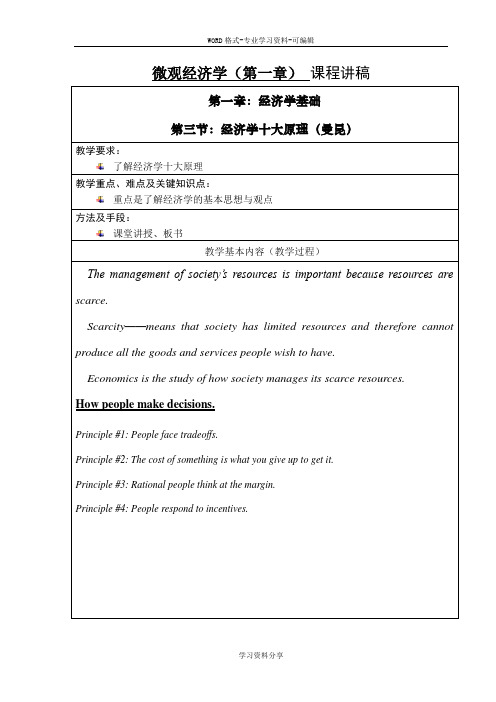
How people make decisions.
Principle #1: People face tradeoffs.
Principle #2: The cost of something is what you give up to get it.
Principle #3: Rational people think at the margin.
Principle #4: People respond to incentives.
微观经济学(第一章)课程讲稿
How people interact with each other.
Principle #5: Trade can make everyone better off.
Principle #6: Markets are usually a good way to organize economic activity.
Principle #7: Governments can sometimes improve economic outcomes.
The forces and trends that affect how the economy as a whole works.
Principle #8: The standard of living depends on a country’s production.
Scarcity——means that society has limited resources and therefore cannot produce all the goods and services people wish to have.
Economics is the study of how society manages its scarce resourcethe government prints too much money.
Principle #1: People face tradeoffs.
Principle #2: The cost of something is what you give up to get it.
Principle #3: Rational people think at the margin.
Principle #4: People respond to incentives.
微观经济学(第一章)课程讲稿
How people interact with each other.
Principle #5: Trade can make everyone better off.
Principle #6: Markets are usually a good way to organize economic activity.
Principle #7: Governments can sometimes improve economic outcomes.
The forces and trends that affect how the economy as a whole works.
Principle #8: The standard of living depends on a country’s production.
Scarcity——means that society has limited resources and therefore cannot produce all the goods and services people wish to have.
Economics is the study of how society manages its scarce resourcethe government prints too much money.
迈克尔版本微观经济第一章ppt (英文版)
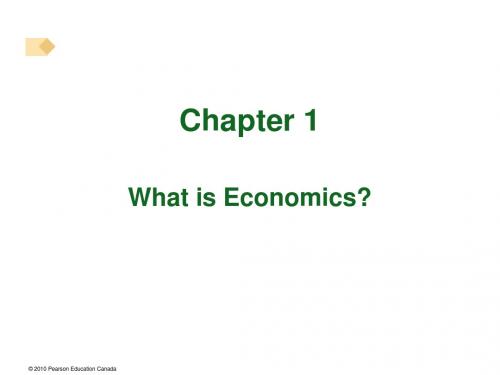
© 2010 Pearson Education Canada
Two Big Economic Questions
Figure 1.1 shows the trends in what the Canadian economy has produced over the past 60 years. It shows the decline of agriculture, mining, construction, and manufacturing, and the expansion of services.
Chapter 1
What is Economics?
© 2010 Pearson Education Canada
In this lecture, we will learn:
• What is Economics all about? • What are the two major branches of economics?
Choices that individuals, businesses and the entire society make in order to allocate their limited resources, determine their economic future and their economic well-being.
© 2010 Pearson Education Canada
The Economic Way of Thinking
Choosing at the Margin
People make choices at the margin, which means that they evaluate the consequences of making incremental changes in the use of their resources. The benefit from pursuing an incremental increase in an activity is its marginal benefit. The opportunity cost of pursuing an incremental increase in an activity is its marginal cost.
Two Big Economic Questions
Figure 1.1 shows the trends in what the Canadian economy has produced over the past 60 years. It shows the decline of agriculture, mining, construction, and manufacturing, and the expansion of services.
Chapter 1
What is Economics?
© 2010 Pearson Education Canada
In this lecture, we will learn:
• What is Economics all about? • What are the two major branches of economics?
Choices that individuals, businesses and the entire society make in order to allocate their limited resources, determine their economic future and their economic well-being.
© 2010 Pearson Education Canada
The Economic Way of Thinking
Choosing at the Margin
People make choices at the margin, which means that they evaluate the consequences of making incremental changes in the use of their resources. The benefit from pursuing an incremental increase in an activity is its marginal benefit. The opportunity cost of pursuing an incremental increase in an activity is its marginal cost.
平狄克微观经济学课件英文01精品文档19页

Chapter 1: Preliminaries
Copyright © 2009 Pearson Education, Inc. Publishing as Prentice Hall • Microeconomics • Pindyck/Rubinfeld, 7e.
4 of 18
1.1 THE THEMES OF MICROECONOMICS
Theories and Models
In economics, explanation and prediction are based on theories. Theories are developed to explain observed phenomena in terms of a set of basic rules and assumptions.
Workers Workers also face constraints and make trade-offs. First, people must decide whether and when to enter the workforce. Second, workers face trade-offs in their choice of employment. Finally, workers must sometimes decide how many hours per week they wish to work, thereby trading off labor for leisure.
In a market economy, prices are determined by the interactions of consumers, workers, and firms. These interactions occur in markets—collections of buyers and sellers that together determine the price of a good.
《微观经济学英》PPT课件

Edited by Yong, E.L.
精选ppt
15
Continuously,
Microeconomics is also used for evaluating broad question in regards to government policy (although this is more to macroeconomics).
Edited by Yong, E.L.
精选ppt
8
Continuously,
If the firm produces 10 units of apple and 6 units of apple pie wants to increase the production of apple pie by one unit to the 7th unit. It has to forgo 1 unit of apple so that resources can be shifted to produce the additional apple pie; Opportunity Cost is thus 1.
3) Give a point to how this might be disturbed.
- If Health Ministry imposes a new law to reduce apple pie due to obesity in children and increase apple production, the producer may not be able to find the best combination of resources for the new plan of production set by the government.
微观经济学课件英文版 En-micro01
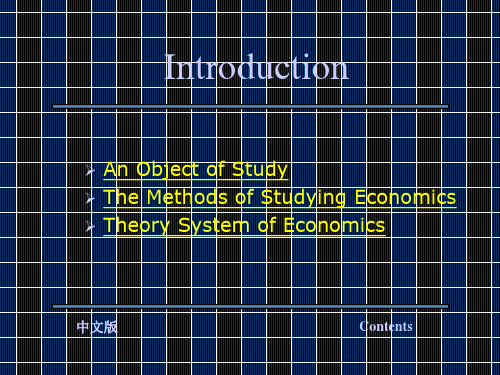
Economics
Relationship Between Microeconomics and Macroeconomics
Different e.g.object of study ,method of analysis Contact Microeconomics is the foundation of macroeconomics Complementary Both of them can research the same economy phenomenon from different visual angle .
01:14
5
An object of study
In short, Economics studies optimal allocation and full use of resources. In detail :
Microeconomics What ,how,for whom Macroeconomics Resources are used fully or idly? How does inflation affect purchasing power? Can economy grow?
01:14
8
Theory System of Economics
Two branches:Microeconomics and Macroeconomics
Microeconomics Another name Theory base Basic assumptions Founder Subject Key theory Major aim Individual Economics Macroeconomics Overall Economics
Relationship Between Microeconomics and Macroeconomics
Different e.g.object of study ,method of analysis Contact Microeconomics is the foundation of macroeconomics Complementary Both of them can research the same economy phenomenon from different visual angle .
01:14
5
An object of study
In short, Economics studies optimal allocation and full use of resources. In detail :
Microeconomics What ,how,for whom Macroeconomics Resources are used fully or idly? How does inflation affect purchasing power? Can economy grow?
01:14
8
Theory System of Economics
Two branches:Microeconomics and Macroeconomics
Microeconomics Another name Theory base Basic assumptions Founder Subject Key theory Major aim Individual Economics Macroeconomics Overall Economics
微观经济学英文版PPT课件
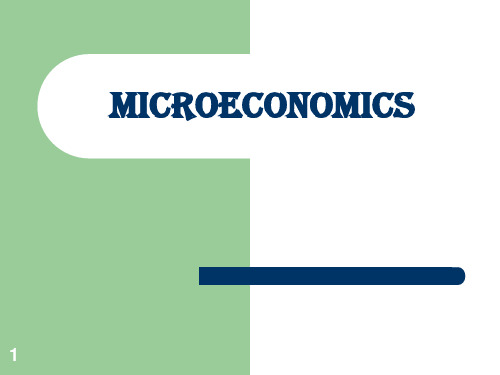
Or, the opportunity cost that use a certain resource is the highest price of abandoning other uses of this resource
10
2.2 the definition of microeconomics
The starting point of economics searching The definition of Microeconomics People how to make decision Why need to bargain Why need to build market economics
Economics is a study, learning selection of scarce resources with different uses; The goal is effective allocation of scarce resources to produce goods and services, and in the present or future, let them reasonable allocated to social members or group for consumption.
8
Production possibilities curve
PPC is a graph that shows the combinations of output that the economy can possibly produce given the available factors of production and the available production technology.
10
2.2 the definition of microeconomics
The starting point of economics searching The definition of Microeconomics People how to make decision Why need to bargain Why need to build market economics
Economics is a study, learning selection of scarce resources with different uses; The goal is effective allocation of scarce resources to produce goods and services, and in the present or future, let them reasonable allocated to social members or group for consumption.
8
Production possibilities curve
PPC is a graph that shows the combinations of output that the economy can possibly produce given the available factors of production and the available production technology.
微观经济学英文版精品PPT课件

Chapter 1: The Fundamentals of Economics(A. Introduction)
1.2 Microeconomics and Macroeconomics
What is Microeconomics ?
It is concerned with the behavior of individual entities such as markets, firms and households.
You want to buy a computer which is $2510. while it is $2500 in the supermarket in downtown. Wherever you buy the computer, it would return to the producer if there is any problem. Where would you buy it?
There are three types of economies:
Market economy Command economy Mixed economy
Chapter 1: The Fundamentals of Economics (C. Society’s technological possibilities)
Chapter 1: The Fundamentals of Economics(A. Introduction)
1.1 Scarcity and Efficiency
What is economics ?
Economics is the study f how societies use scarce resources to produce valuable commodities and distribute them among different people.
微观经济学第一章ppt课件

2018/10/23
Lectures on Microeconomics
14
第三节 经济学的特点
一. 问题和对象
1. 宏观经济学
•研究的问题: 经济政策与经济增长问题
• 研究对象: 整个国家的经济总量
• 中心理论——国民经济均衡理论
• 分析方法——总量分析法
2018/10/23
Lectures on Microeconomics
3
经济行为是与节省稀缺资源、得到最大利益有关
的人类活动, 个体的经济行为构成社会经济行为,
个体与社会的经济行为统称经济活动。
--经济学是最古老的艺术、最新颖的科学。
--经济学是社会科学的皇后。
……;……
--经济学是研究人类行为的一门科学,它考
察目的与具有多用途的稀缺手段之间的关
2018/10/23
系。
Lectures on Microeconomics
4
经济行为是与节省稀缺资源、得到最大利益有关
的人类活动, 个体的经济行为构成社会经济行为,
个体与社会的经济行为统称经济活动。
--经济学是最古老的艺术、最新颖的科学。
--经济学是社会科学的皇后。
……;……
--经济学是研究人类行为的一门科学,它考
例如,如果一个工人在企业工作的年薪是5万元, 在机关工作的年薪是4万元,那么他就读于一所免 费社会大学的机会成本就是5万元。 由此可见,社会的选择就是权衡好处与成本的过 程。这样经济问题的解决可被视为如何使得选择 的机会成本达到最低。
经济学正式围绕这一问题的解决而展开。
2018/10/23
Lectures on Microeconomics
微观经济学第一 章教学
微观经济学:现代观点原版PPT(英文)第一章
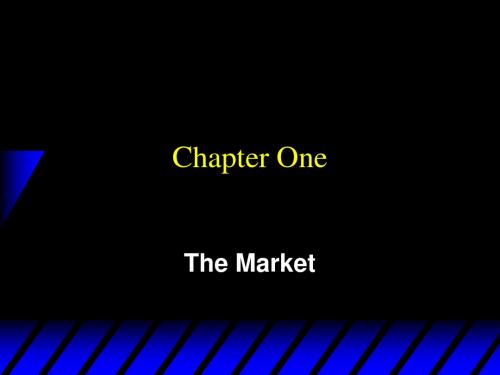
Market Equilibrium
p
pe 100 QD,QS
Market Equilibrium
p
Higher incomes cause higher willingness-to-pay
pe 100 QD,QS
Market Equilibrium
p
Higher incomes cause higher willingness-to-pay, higher market price, and the same quantity traded.
pe 100 QD,QS
Competitive Market Equilibrium
p
People willing to pay pe for close apartments get close apartments. People not willing to pay pe for close apartments get distant apartments.
Market Supply Curve for Apartments
p
100
QS
Competitive Market Equilibrium
rental price quantity demanded of close apartments exceeds quantity available price will rise. “high” rental price quantity demanded less than quantity available price will fall.
Economic Modeling Assumptions
Two
微观经济学双语课件
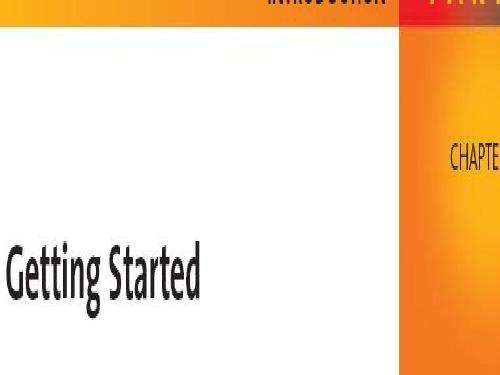
1.2 ECONOMICS: A SOCIAL SCIENCE
Goal of economists is to discover how the economic world works. Economists distinguish between:
• Positive statements(实证经济学): What is • Normative statements(规范经济学): What ought to be The task of economic science:
The condition that arises because the available resources are insufficient to satisfy unlimited wants. Faced with scarcity, we must make choices—we must choose among the available alternatives. The choices we make depend on the incentives we face.
Checkpoint 1.1
1. Give the definition of following statement (1) Scarcity (2) Incentive (3) Economics (4) Microeconomics (5) Macroeconomics 2. Economists studies choice that arise from one fact. What is the fact ? 3. Provide 3 examples of wants in China today that are especially pressing but not satisfied. 4. Provide an examples of an incentive that is like a carrot and one that like a stick.(tax or subsidy )
《微观经济学microeconomics》英文版全套课件(101页)
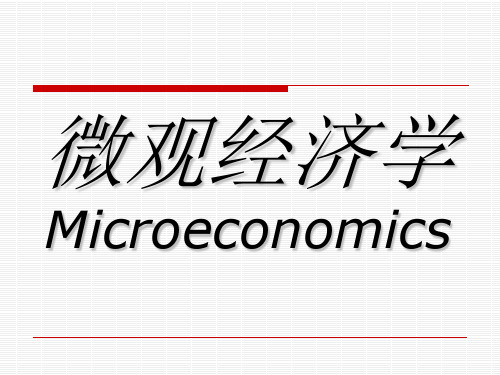
X RL {x R : xl 0 for l 1,..., L}
The economic constraint:
px p1x1 ... pL xL w
The Walrasian budget set (Definition 2.D.1)
Bp,w {x RL : px w}
or
u(x* ) xl
pl
px w
Solution: Walrasian demand function x*( p, w)
Utility Maximization -- Example
Example 3.D.1: the transformed Cobb-Douglas Utility Function
Expenditure Function
Expenditure function e( p,u) Min px s.t. u(x) u {x}
Properties: 1. Homogeneous of degree of one in p 2. Strictly increasing in u and nondecreasing in p 3. Concave in p 4. Continuous in p and u
Comparative Statics – Wealth Effects
The consumer’s Engel function x( p, w)
The wealth effect xl ( p, w) / w or Dwx( p, w) Normal goods and inferior goods
A choice rule C(B) B
The weak axiom of revealed preference (WARP): if x is revealed at least as good as y, then y cannot be revealed preferred to x
The economic constraint:
px p1x1 ... pL xL w
The Walrasian budget set (Definition 2.D.1)
Bp,w {x RL : px w}
or
u(x* ) xl
pl
px w
Solution: Walrasian demand function x*( p, w)
Utility Maximization -- Example
Example 3.D.1: the transformed Cobb-Douglas Utility Function
Expenditure Function
Expenditure function e( p,u) Min px s.t. u(x) u {x}
Properties: 1. Homogeneous of degree of one in p 2. Strictly increasing in u and nondecreasing in p 3. Concave in p 4. Continuous in p and u
Comparative Statics – Wealth Effects
The consumer’s Engel function x( p, w)
The wealth effect xl ( p, w) / w or Dwx( p, w) Normal goods and inferior goods
A choice rule C(B) B
The weak axiom of revealed preference (WARP): if x is revealed at least as good as y, then y cannot be revealed preferred to x
北大微观经济学(英文版) ppt课件

A x1
B x2
29
A x2
Edgeworth’s Box
B 1
xB 1
OB
A 2
B 2
OA
ppt课件
A 1
A x1
xB 2
30
Pareto-Improvement
An
allocation of the endowment that improves the welfare of a consumer without reducing the welfare of another is a Pareto-improving allocation. Where are the Pareto-improving allocations?
A 1
A x1
xB 2
33
Pareto-Improvements
Since
each consumer can refuse to trade, the only possible outcomes from exchange are Pareto-improving allocations. But which particular Paretoimproving allocation will be the outcome of trade?
ppt课件
34
x2
xB 1
Pareto-Improvements A
B 1
OB
A 2
B 2
OA The set of Paretoimproving reallocations ppt课件
A 1
A x1
xB 2
35
Pareto-Improvements
微观经济学(平狄克、鲁宾费尔德)最新版(第六版) 英文原版PPTCh01_Pindyck
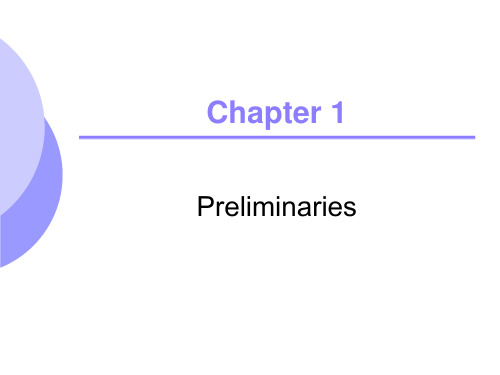
11
Theories and Models
Validating a Theory
The validity of a theory is determined by the quality of its prediction, given the assumptions Theories must be tested and refined Theories are invariably imperfect – but gives much insight into observed phenomena
©2005 Pearson Education, Inc.
Chapter 1
15
What is a Market?
Market Definition
Determination of the buyers, sellers, and range of products that should be included in a particular market
What choices do individuals make in terms of jobs or workplaces? How many hours do individuals choose to work?
Trade-off of labor and leisure
©2005 Pearson Education, Inc.
©2005 Pearson Education, Inc.
©2005 Pearson Education, Inc.
Chapter 1
8
Themes of Microeconomics
Prices
How are prices determined?
平狄克微观经济学(英文)01PPT课件
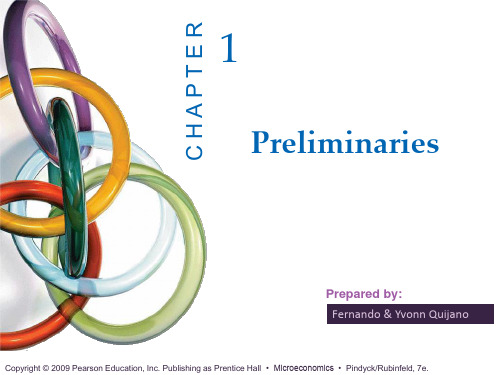
Market definition is important for two reasons:
• A company must understand who its actual and potential
competitors are for the various products that it sells or might sell in the future.
Market Price
● market price Price prevailing in a competitive market.
Chapter 1: Preliminaries
Copyright © 2009 Pearson Education, Inc. Publishing as Prentice Hall • Microeconomics • Pindyck/Rubinfeld, 7e.
Chapter 1: Preliminaries
Copyright © 2009 Pearson Education, Inc. Publishing as Prentice Hall • Microeconomics • Pindyck/Rubinfeld, 7e.
10 of 18
1.2 WHAT IS A MARKET?
Theories and Models
In economics, explanation and prediction are based on theories. Theories are developed to explain observed phenomena in terms of a set of basic rules and assumptions.
• A company must understand who its actual and potential
competitors are for the various products that it sells or might sell in the future.
Market Price
● market price Price prevailing in a competitive market.
Chapter 1: Preliminaries
Copyright © 2009 Pearson Education, Inc. Publishing as Prentice Hall • Microeconomics • Pindyck/Rubinfeld, 7e.
Chapter 1: Preliminaries
Copyright © 2009 Pearson Education, Inc. Publishing as Prentice Hall • Microeconomics • Pindyck/Rubinfeld, 7e.
10 of 18
1.2 WHAT IS A MARKET?
Theories and Models
In economics, explanation and prediction are based on theories. Theories are developed to explain observed phenomena in terms of a set of basic rules and assumptions.
- 1、下载文档前请自行甄别文档内容的完整性,平台不提供额外的编辑、内容补充、找答案等附加服务。
- 2、"仅部分预览"的文档,不可在线预览部分如存在完整性等问题,可反馈申请退款(可完整预览的文档不适用该条件!)。
- 3、如文档侵犯您的权益,请联系客服反馈,我们会尽快为您处理(人工客服工作时间:9:00-18:30)。
以一系列的基本规则和假设,应用理论解释 观察到的现象. Theories are used to explain observed phenomena in terms of a set of basic rules and assumptions.
Chapter 1
Slide 24
理论和模型Theories and Models
微观经济分析 Microeconomic Analysis
例如 For example 厂商理论(生产者行为理论) The Theory of the Firm 消费者行为理论 The Theory of Consumer Behavior
Chapter 1Theories and Models
微观经济分析 Microeconomic Analysis
模型 Models: 用来(对厂商和市场)作出预测的理论的数 学表述 a mathematical representation of a theory used to make a prediction. 运用统计学和计量经济学的技术,理论可 以用来构造模型,并由此作出定量预测.
Chapter 1
Slide 26
理论和模型 Theories and Models
微观经济分析 Microeconomic Analysis
理论的有效性(和有用性) Validating a Theory 在假设既定的前提下,理论的有效性取决 于预测(和解释)的质量. The validity of a theory is determined by the quality of its prediction, given the assumptions.
• 我们如何选择购买什么—消费决策 How we choose what to buy
Chapter 1
Slide 14
绪论 Preliminaries
微观经济学研究: (个别经济单位如何作 出决策) Microeconomics deals with:
个别单位的行为 Behavior of individual units 当生产时 When Producing
宏观经济学也涉及市场分析(行为分析) 宏观经济学(部分内容)是微观经济学的延伸
Chapter 1
Slide 18
微观经济学的研究对象 The Themes of Microeconomics
你无法总是得到你想要的 You can’t always get what you want
为什么不能? Why Not?
Chapter 1
Slide 7
关于教材的使用
第三篇 市场结构和竞争策略(10-15)
第10章 市场势力:垄断和买方垄断(1-4) 第11章 有市场势力的定价(1-3) 第12章 垄断竞争与寡头垄断(1-2 、 5-6) 第14章 要素投入品市场 第15章 投资、时间与资本市场(1-4)
3. 厂商(企业)理论(生产什么/生产多少/如何生 产—雇用多少工人) Theory of the Firm
Chapter 1
Slide 22
微观经济学的研究对象 The Themes of Microeconomics
微观经济学和价格 Microeconomics and
Prices
市场经济中价格的作用(信号,看不见的手)
The role of prices in a market economy
价格是如何决定的(供求及其背后) How
prices are determined
Chapter 1
Slide 23
理论和模型 Theories and Models
微观经济分析 Microeconomic Analysis
或“什么才是最佳的” 政策的选择,政策的设计(成本和收益,最佳税
第四篇 信息,市场失灵以及政府的作用(16-18)
第18章 外部性与公共物品(1、2 、 5)
Chapter 1
Slide 8
关于教材的使用(思考与练习)
各章末尾配备复习思考题和练习题
富有挑战性的思考题和练习题! 部分答案
预习、听课、复习、练习、讨论 几点要求
以讲授为纲,以教材为本,以小组为团队
解释和预测(理论→模型→预测) 微观经济学的中心
Chapter 1
Slide 30
实证分析 Positive Analysis
例如: For example: 进口配额对进口汽车有什么样的影响? What will be the impact of an import quota on foreign cars? 提高汽油税有什么样的影响? What will be the impact of an increase in the gasoline excise tax?
Chapter 1
Slide 5
关于教材的特点
特点二:内容组织合理、富有挑战性,令 人收益菲浅。
特点三:强调有用性,密切联系实际,穿插 80多个具体的案例分析,融合于全书之 中,帮助理解经济学基本理论和方法。
本书的两位作者都是著名经济学家,很多案 例都取材于计量经济学研究论文的内容,有 理有据。
• 对厂商经理和公共政策制定者都很重要
Chapter 1
Slide 31
实证和规范 Positive versus Normative Analysis
规范分析(应是什么) Normative Analysis
规范分析从“应当是什么”的角度表述问题 Normative analysis addresses issues from the perspective of “What ought to be?”
Chapter 1
Slide 9
第一篇 PART Ⅰ
导论: INTRODUCTION: 市场和价格 MARKETS AND PRICE 共两章:1 、绪论;2 、供给和需求的基
本原理—加深理解在入门课程学过 的微观经济学
Chapter 1
Slide 10
第一章 Chapter 1
绪论Preliminaries
Chapter 1
Slide 27
理论和模型 Theories and Models
微观经济分析 Microeconomic Analysis
理论的演变 Evolving the Theory 检验和修正是经济科学发展的中心. Testing and refining theories is central to the development of the science of economics. 观察→检验→修正或完善,甚至是抛弃
Chapter 1
Slide 17
绪论 Preliminaries
微观经济学和宏观经济学的联系 The Linkage Between Micro and Macroeconomics
微观经济学是宏观经济分析的基础 Microeconomics is the foundation of macroeconomic analysis
• 我们选择生产什么—生产决策 How we choose what to produce
Chapter 1
Slide 15
绪论 Preliminaries
微观经济学研究(市场和行业): Microeconomics deals with:
市场: 消费者和生产者的相互作用 Markets: The interaction of consumers and producers 个别经济单位(消费者和生产者)的相互作 用形成更大的经济单位(市场和行业)
Chapter 1
Slide 12
讨论的题目 Topics to be Discussed
1)微观经济学的主题 The Themes of Microeconomics
2)什么是市场? What Is a Market? 3)实际价格与名义价格 Real Versus
Nominal Prices
微观经济学 MICROECONOMICS
Robert S. Pindyck(平狄克)
Chapter 1
Slide 2
Chapter 1
Slide 3
关于教材的特点
被美国许多著名院校广泛采用的中级微 观经济学教材,有三个特点:
特点一:内容全面,材料新颖.既包括了微 观经济学的主要内容,如消费者行为与 需求理论、生产者行为与供给理论等, 又吸收了微观经济学过去十几年的最新 研究成果,时代感强。
Chapter 1
Slide 19
微观经济学的研究对象 The Themes of Microeconomics
为什么不能? Why Not?
有限的资源 Limited Resources 欲望的无限性和资源的有限性
• 人苦不知足 • 资源的稀缺
Chapter 1
Slide 20
微观经济学的研究对象 The Themes of Microeconomics
Slide 21
微观经济学的研究对象 The Themes of Microeconomics
微观经济学和最优权衡取舍(最大选择)
Microeconomics and Optimal Trade-offs
1. 消费者理论(如何作出购买决策) Consumer Theory
2. 工人们(如何决定工作地点和工作量) Workers
微观经济学 Microeconomics
稀缺资源的配置和权衡取舍(选择) Allocation of Scarce Resources and Trade-offs 在计划经济中 In a planned economy 在市场经济中 In a market economy
Chapter 1
Slide 24
理论和模型Theories and Models
微观经济分析 Microeconomic Analysis
例如 For example 厂商理论(生产者行为理论) The Theory of the Firm 消费者行为理论 The Theory of Consumer Behavior
Chapter 1Theories and Models
微观经济分析 Microeconomic Analysis
模型 Models: 用来(对厂商和市场)作出预测的理论的数 学表述 a mathematical representation of a theory used to make a prediction. 运用统计学和计量经济学的技术,理论可 以用来构造模型,并由此作出定量预测.
Chapter 1
Slide 26
理论和模型 Theories and Models
微观经济分析 Microeconomic Analysis
理论的有效性(和有用性) Validating a Theory 在假设既定的前提下,理论的有效性取决 于预测(和解释)的质量. The validity of a theory is determined by the quality of its prediction, given the assumptions.
• 我们如何选择购买什么—消费决策 How we choose what to buy
Chapter 1
Slide 14
绪论 Preliminaries
微观经济学研究: (个别经济单位如何作 出决策) Microeconomics deals with:
个别单位的行为 Behavior of individual units 当生产时 When Producing
宏观经济学也涉及市场分析(行为分析) 宏观经济学(部分内容)是微观经济学的延伸
Chapter 1
Slide 18
微观经济学的研究对象 The Themes of Microeconomics
你无法总是得到你想要的 You can’t always get what you want
为什么不能? Why Not?
Chapter 1
Slide 7
关于教材的使用
第三篇 市场结构和竞争策略(10-15)
第10章 市场势力:垄断和买方垄断(1-4) 第11章 有市场势力的定价(1-3) 第12章 垄断竞争与寡头垄断(1-2 、 5-6) 第14章 要素投入品市场 第15章 投资、时间与资本市场(1-4)
3. 厂商(企业)理论(生产什么/生产多少/如何生 产—雇用多少工人) Theory of the Firm
Chapter 1
Slide 22
微观经济学的研究对象 The Themes of Microeconomics
微观经济学和价格 Microeconomics and
Prices
市场经济中价格的作用(信号,看不见的手)
The role of prices in a market economy
价格是如何决定的(供求及其背后) How
prices are determined
Chapter 1
Slide 23
理论和模型 Theories and Models
微观经济分析 Microeconomic Analysis
或“什么才是最佳的” 政策的选择,政策的设计(成本和收益,最佳税
第四篇 信息,市场失灵以及政府的作用(16-18)
第18章 外部性与公共物品(1、2 、 5)
Chapter 1
Slide 8
关于教材的使用(思考与练习)
各章末尾配备复习思考题和练习题
富有挑战性的思考题和练习题! 部分答案
预习、听课、复习、练习、讨论 几点要求
以讲授为纲,以教材为本,以小组为团队
解释和预测(理论→模型→预测) 微观经济学的中心
Chapter 1
Slide 30
实证分析 Positive Analysis
例如: For example: 进口配额对进口汽车有什么样的影响? What will be the impact of an import quota on foreign cars? 提高汽油税有什么样的影响? What will be the impact of an increase in the gasoline excise tax?
Chapter 1
Slide 5
关于教材的特点
特点二:内容组织合理、富有挑战性,令 人收益菲浅。
特点三:强调有用性,密切联系实际,穿插 80多个具体的案例分析,融合于全书之 中,帮助理解经济学基本理论和方法。
本书的两位作者都是著名经济学家,很多案 例都取材于计量经济学研究论文的内容,有 理有据。
• 对厂商经理和公共政策制定者都很重要
Chapter 1
Slide 31
实证和规范 Positive versus Normative Analysis
规范分析(应是什么) Normative Analysis
规范分析从“应当是什么”的角度表述问题 Normative analysis addresses issues from the perspective of “What ought to be?”
Chapter 1
Slide 9
第一篇 PART Ⅰ
导论: INTRODUCTION: 市场和价格 MARKETS AND PRICE 共两章:1 、绪论;2 、供给和需求的基
本原理—加深理解在入门课程学过 的微观经济学
Chapter 1
Slide 10
第一章 Chapter 1
绪论Preliminaries
Chapter 1
Slide 27
理论和模型 Theories and Models
微观经济分析 Microeconomic Analysis
理论的演变 Evolving the Theory 检验和修正是经济科学发展的中心. Testing and refining theories is central to the development of the science of economics. 观察→检验→修正或完善,甚至是抛弃
Chapter 1
Slide 17
绪论 Preliminaries
微观经济学和宏观经济学的联系 The Linkage Between Micro and Macroeconomics
微观经济学是宏观经济分析的基础 Microeconomics is the foundation of macroeconomic analysis
• 我们选择生产什么—生产决策 How we choose what to produce
Chapter 1
Slide 15
绪论 Preliminaries
微观经济学研究(市场和行业): Microeconomics deals with:
市场: 消费者和生产者的相互作用 Markets: The interaction of consumers and producers 个别经济单位(消费者和生产者)的相互作 用形成更大的经济单位(市场和行业)
Chapter 1
Slide 12
讨论的题目 Topics to be Discussed
1)微观经济学的主题 The Themes of Microeconomics
2)什么是市场? What Is a Market? 3)实际价格与名义价格 Real Versus
Nominal Prices
微观经济学 MICROECONOMICS
Robert S. Pindyck(平狄克)
Chapter 1
Slide 2
Chapter 1
Slide 3
关于教材的特点
被美国许多著名院校广泛采用的中级微 观经济学教材,有三个特点:
特点一:内容全面,材料新颖.既包括了微 观经济学的主要内容,如消费者行为与 需求理论、生产者行为与供给理论等, 又吸收了微观经济学过去十几年的最新 研究成果,时代感强。
Chapter 1
Slide 19
微观经济学的研究对象 The Themes of Microeconomics
为什么不能? Why Not?
有限的资源 Limited Resources 欲望的无限性和资源的有限性
• 人苦不知足 • 资源的稀缺
Chapter 1
Slide 20
微观经济学的研究对象 The Themes of Microeconomics
Slide 21
微观经济学的研究对象 The Themes of Microeconomics
微观经济学和最优权衡取舍(最大选择)
Microeconomics and Optimal Trade-offs
1. 消费者理论(如何作出购买决策) Consumer Theory
2. 工人们(如何决定工作地点和工作量) Workers
微观经济学 Microeconomics
稀缺资源的配置和权衡取舍(选择) Allocation of Scarce Resources and Trade-offs 在计划经济中 In a planned economy 在市场经济中 In a market economy
